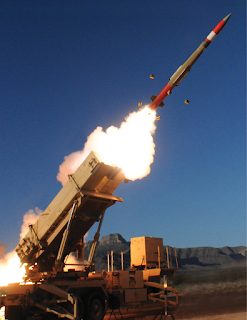Top 5 Technologies Used In Defence
Top 5 Technologies Used In Defence
- Chemical weapons:-
The first and most important line of defense against chemical agents is the individual protection provided by gas masks and protective clothing and the collective protection of combat vehicles and mobile or fixed shelters.
Filters for masks and shelters contain specially treated activated charcoal, to remove vapours, and paper membranes or other materials, to remove particles. Chemical detectors have been developed to help identify levels and places of contamination. These include chemically treated litmus paper used to determine the presence of chemical agents. Other sensors may include handheld assays, vehicles equipped with scoops and laboratory analysis tools, and both point and standoff sensors.
A number of methods have been found useful in decontaminating areas and people covered with chemical agents, including spraying with super tropical bleach (chlorinated lime) or washing contaminated surfaces or garments with warm soapy water. The challenge is finding and using a decontamination solution that is strong enough to neutralize the chemical agent without damaging the equipment or harming the personnel.
Chemical agents used against unprotected forces can cause high casualties, fear, and confusion. Thus, personnel facing adversaries equipped with chemical weapons must be trained to don individual protective equipment, seek cover in collective protection shelters, avoid contaminated areas, and rapidly decontaminate personnel and equipment that have been exposed. However, such measures, while necessary to protect against chemical attacks, may expose protected forces to greater casualties from conventional weapons fire and lead to a loss of conventional combat effectiveness.
- Combat vehicles:-
1. Light Support Vehicle
This Light Support Vehicle (Merlin LSV) was specifically manufactured for the Indian armed forces.
The Merlin LSV boasts a 7.6mm medium machine gun turret and a 40mm automatic grenade launcher mounted on the roof. It can also easily transport troops and deliver supplies.
Moreover, the Merlin has bears STANAG 4569 Level-1 protection on the sides and rear (one of the highest-rated protection according to NATO standards).

2. Windy 505
This is Indian army’s first-ever patented vehicle innovated by corps of electrical and mechanical engineers and was unveiled on the occasion of the eighth Corps Reunion. The Windy 505 is a state-of-the-art combat vehicle equipped with Medium Missile Gun (MMG) and Global Positioning System (GPS) with additional surveillance equipment.
- Internet Of Technology(IoT) :-
- Artificial Intelligence(AI) :-
With AI-empowered checking frameworks, it has gotten exceptionally simple to anticipate the moves of the adversary and battle with them sagaciously. Artificial intelligence helps the military is looking for hidden mortars and unapproved underground sections, checking unapproved exercises utilizing movement sensors and watching out for the foe utilizing AI-based cameras. The use of Artificial Intelligence in the Defence of India brings exceptionally change as the best defense system.
- Electro-Optics System:-
The term "electro-optical sensor" covers a wide range of sensor technologies and applications. At their root, electro-optical (E/O) sensors are electronic detectors that convert light, or a change in light, into an electronic signal, which is analyzed to trigger preset responses.
The capability of any E/O sensor stems from the balancing of two fundamental limits: the combination of resolution and sensitivity, and pixilation. Resolution means how small an object can be usefully seen. Sensitivity means how dim the signal can be before it is overwhelmed by environmental noise. Pixilation refers to sampling of the sensor image.





















No comments: